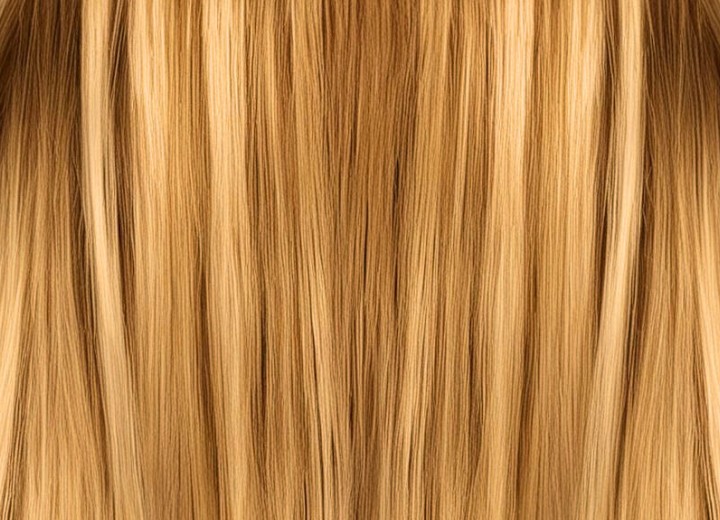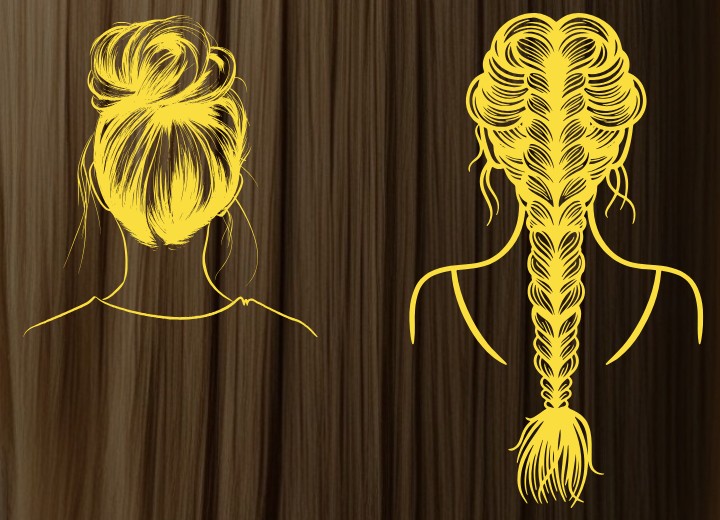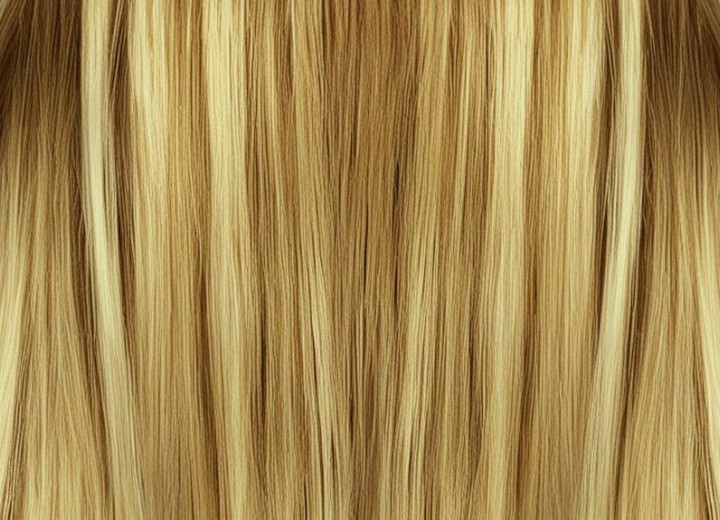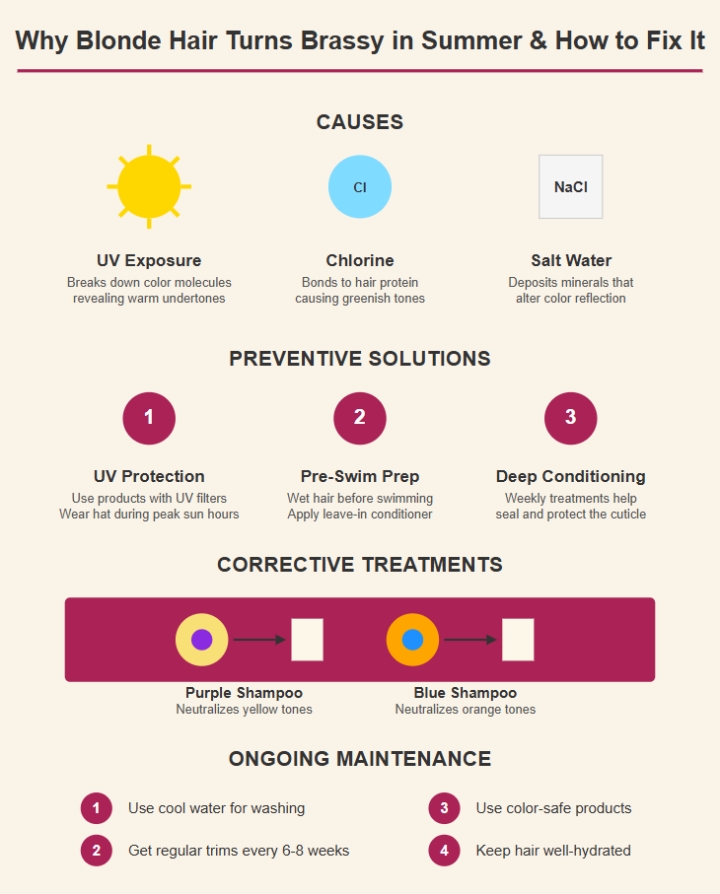Brassy Blonde Hair

Q: My blonde hair always turns brassy in the summer. Why does this happen, and what can I do about it? How can I fix it and prevent it from happening again?
A: Brassy blonde hair has warm, yellow, orange, or even reddish undertones that make it appear overly warm or unnatural. Brassiness in blonde hair during summer is a common frustration caused by several factors:
UV Exposure: Sunlight contains ultraviolet rays that break down the color molecules in your hair. For blonde hair specifically, this degradation often reveals underlying warm pigments (orange and yellow tones), creating that brassy appearance. Think of it like how a photograph fades when left in sunlight, but with your hair, the fading reveals warmer undertones.
Chlorine Damage: Swimming pool chlorine is particularly harsh on blonde hair. Chlorine is actually a bleaching agent, but rather than lightening evenly, it attaches to the protein in your hair and oxidizes, creating a greenish-yellow tint. The chlorine molecules bind to the hair shaft and can cause both discoloration and structural damage.
Heat Damage: Higher temperatures in summer can make the hair cuticle (the outer protective layer) open up, allowing both color molecules to escape and environmental pollutants to enter. This cuticle disruption accelerates color fading and brassiness.
Increased Washing: Many people wash their hair more frequently during summer due to sweating and swimming. Each wash gradually strips color molecules, allowing the warmer undertones to become more visible.
With the right combination of preventative measures and corrective treatments, you can maintain your cool blonde tones throughout the summer. Remember that consistency is key. Using protective products before sun exposure and regularly using toning products will help keep brassiness at bay.
1. Preventative Measures
UV Protection: Apply hair products containing UV filters before sun exposure. These work similar to sunscreen for your skin, creating a protective barrier that blocks harmful rays.
Pre-Swim Preparation: Wet your hair with clean water before swimming. Hair is like a sponge. If it's already saturated with clean water, it will absorb less chlorinated or salt water. Applying a leave-in conditioner creates an additional protective barrier.
Protective Hairstyles: Consider wearing your hair in a bun, braid, or under a hat or scarf during peak sun hours. This physically shields your hair from direct UV exposure when rays are strongest.

Regular Deep Conditioning: Use weekly deep conditioning treatments to maintain your hair's integrity. These treatments help seal the cuticle, preventing both color loss and environmental damage. They work by temporarily filling in gaps in the damaged cuticle layer.
2. Corrective Treatments
Purple Shampoo: Purple shampoos contain violet pigments that neutralize yellow tones due to color theory principle. Purple and yellow are opposite on the color wheel, so they cancel each other out. Use these 1-2 times weekly, leaving on for 3-5 minutes before rinsing.
Blue Shampoo: If your brassiness leans more orange than yellow, blue shampoo works better. Blue neutralizes orange tones through the same color theory principle. Use it similarly to purple shampoo, but don't overuse as it can create a dull appearance.
Toning Treatments: Professional toners or at-home toning glosses can neutralize brassiness by depositing cool-toned pigments. These work by adding a thin coating of cool color to counterbalance the warm tones.
Apple Cider Vinegar Rinse: A diluted apple cider vinegar rinse (1 part vinegar to 3 parts water) can help remove mineral buildup that contributes to brassiness. The acidity helps close the hair cuticle, enhancing shine and reducing future damage.
Clarifying Treatments: For chlorine buildup, use a chelating shampoo designed to remove mineral deposits. These specialized shampoos contain ingredients that bind to and remove metals and minerals from the hair shaft.

3. Ongoing Maintenance
Color-Safe Products: Use shampoos and conditioners specifically formulated for color-treated hair. These have gentler cleansing agents and often contain additional UV protection.
Cool Water Washing: Wash your hair with cool water rather than hot. Hot water opens the cuticle, allowing color molecules to escape more easily, while cool water helps keep the cuticle closed.
Regular Trims: Getting a trim every 6-8 weeks removes the most damaged ends, which often show the most brassiness. This prevents damage from traveling up the hair shaft.
Hydration: Keep your hair well-moisturized with leave-in conditioners and oils appropriate for your hair type. Well-hydrated hair reflects light better, making any brassiness less noticeable.

4. Additional Considerations
Natural vs. Color-Treated Blonde Hair: Natural blondes may experience different patterns of brassiness than those with color-treated hair. Natural blonde hair tends to simply darken and become more golden in summer, while color-treated blonde may reveal more obvious orange or red undertones.
Hair Porosity: High-porosity hair (with more gaps in the cuticle layer) will absorb and lose color more quickly. If your hair tends to get brassy very quickly, you may have high porosity hair that requires more frequent treatments and extra protection.
Water Quality Considerations: Hard water (water with high mineral content) can contribute significantly to brassiness, especially in summer when you might be showering more often. Consider installing a shower filter if you live in a hard water area.
©Hairfinder.com
See also: How to color hair